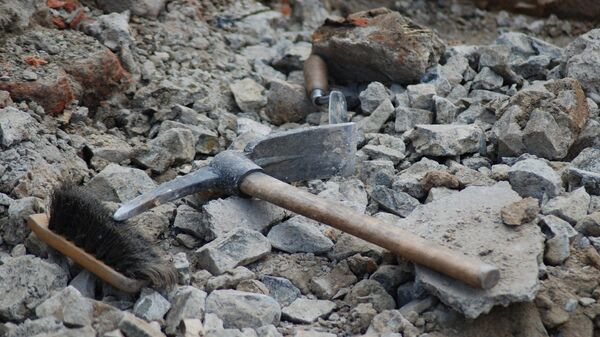Deemed a rare find by officials, the mostly intact 2,000-year-old sundial bears an inscription in Roman lettering identifying the man as "Marcus Novius Tubula, son of Marcus." A second engraving on the structure notes that "Marcus" was a plebeian tribune.
A plebeian tribune represented non-aristocratic citizens in Rome's government, according to the National Geographic. This group later lost the majority of its power with the downfall of the Roman Republic and the creation of the Roman Empire in 27 BC.
Carved from limestone, the sundial, found amid ongoing excavations at the site of Interamna Lirenas, has a concave face with 11 hour lines that intersect with three curves marking the seasons, Raw Story reported.
"Less than a hundred examples of this specific type of sundial have survived and of those, only a handful bear any kind of inscription at all — so this really is a special find," Alessandro Launaro, one of the participating researchers, said in a statement. "Not only have we been able to identify the individual who commissioned the sundial, we have also been able to determine the specific public office he held in relation to the likely date of the inscription."
Per Launaro, the style of the Roman lettering indicates that "Marcus" paid for the object with his own money and that it was commissioned sometime in the middle of the 1st century BCE when the people of Interamna Lirenas had Roman citizenship.
"The sundial would have represented his way of celebrating his election in his own hometown," the researcher said."People looking at it to check the time would have been reminded of Tubula's success."
Though the style of the nearly two-foot-wide sundial is "fairly common," officials were able to further link the structure with the ancient town by the name "Tubula," which is specific to the town. Researchers say the name translates to "small trumpet."
But what became most illuminating for archaeologists was realizing the involvement of political affairs by people from smaller communities.
"We had no idea that anyone hailing from Interamna had ever held an important office in Rome," Launaro said. "Interamna Lirenas was not a town of remarkable prestige or notable influence, it was an average, middle-sized urban settlement."
Officials speculate that the sundial was left behind when "scavengers" were looking for building materials at the town during the Middle Ages.


